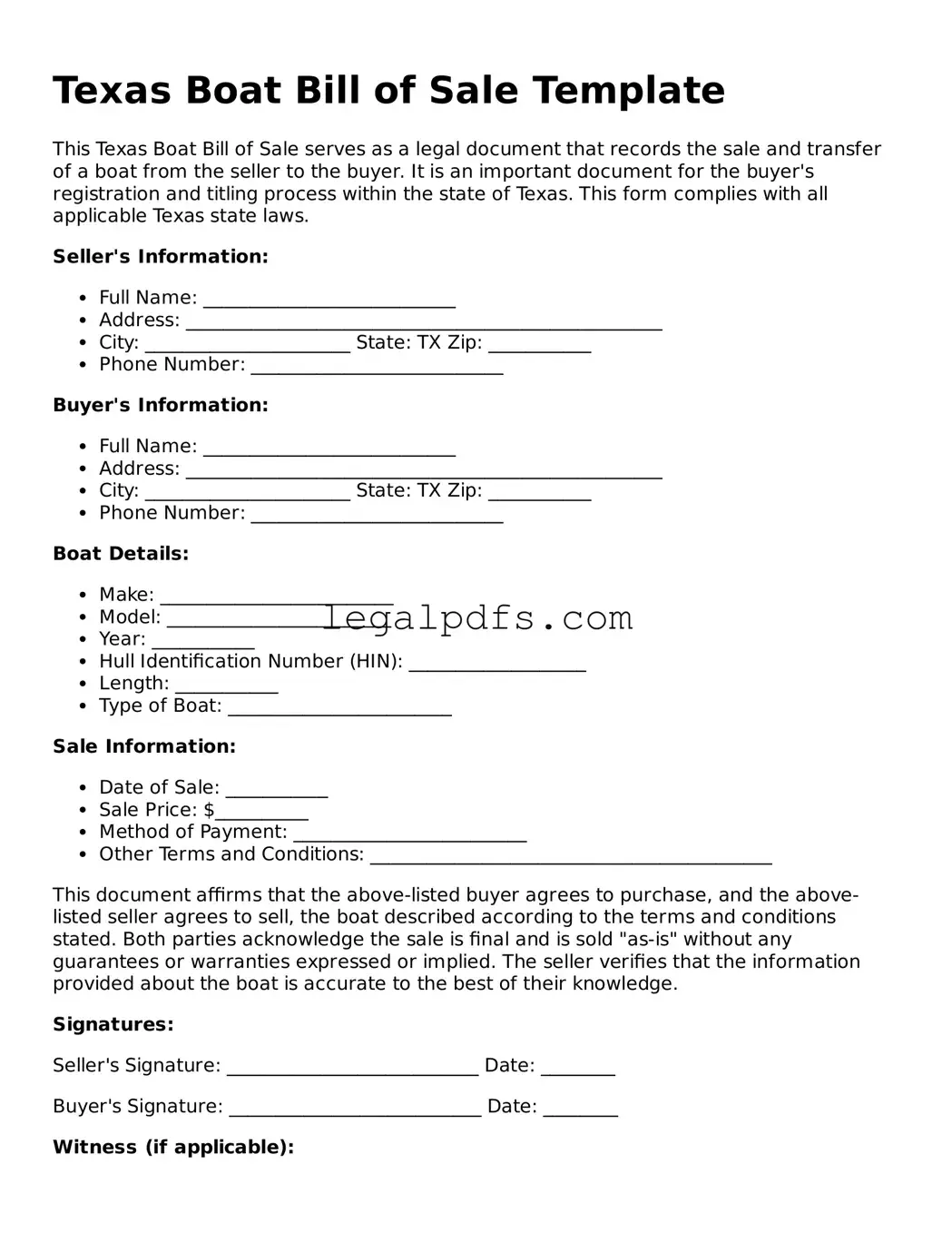What is a Texas Boat Bill of Sale?
The Texas Boat Bill of Sale is a legal document that records the transfer of ownership of a boat from the seller to the buyer in the state of Texas. It provides evidence of the transaction and includes details such as the purchase price, description of the boat, and personal information about the seller and buyer. It's an essential document for both parties and is often required for registration and tax purposes.
Why do I need a Boat Bill of Sale in Texas?
In Texas, a Boat Bill of Sale is crucial for several reasons. Firstly, it serves as proof of purchase and shows that ownership has legally transferred from the seller to the buyer. This is important for registration of the vessel under the new owner's name with the Texas Parks and Wildlife Department. Secondly, it can help in resolving disputes about the boat's ownership. Lastly, it may be required for tax assessment purposes, ensuring that all dues are accurately accounted for.
What information should be included in a Texas Boat Bill of Sale?
A comprehensive Texas Boat Bill of Sale should include the full names and contact details of both the buyer and seller, the sale date, and the price of the boat. Additionally, it should provide a detailed description of the boat, including its make, model, year, hull identification number (HIN), and any included accessories or attached equipment. It's also advisable to mention any warranties or as-is sale terms to protect both parties.
Do I need to have the Boat Bill of Sale notarized in Texas?
No, Texas law does not require a Boat Bill of Sale to be notarized. However, having it notarized can add an extra layer of authenticity and may be beneficial in the event of disputes or for personal peace of mind. Notarization confirms that the signatures on the document are genuine and can help expedite the registration process or any legal proceedings that might arise.
Can I create a Texas Boat Bill of Sale myself?
Yes, you can create a Texas Boat Bill of Sale yourself, and there are templates available online to guide you. However, it's important to ensure that the document includes all necessary details and complies with Texas law. For added security and to ensure that all legal bases are covered, you may consider consulting with a legal professional or utilizing professional legal document services.
